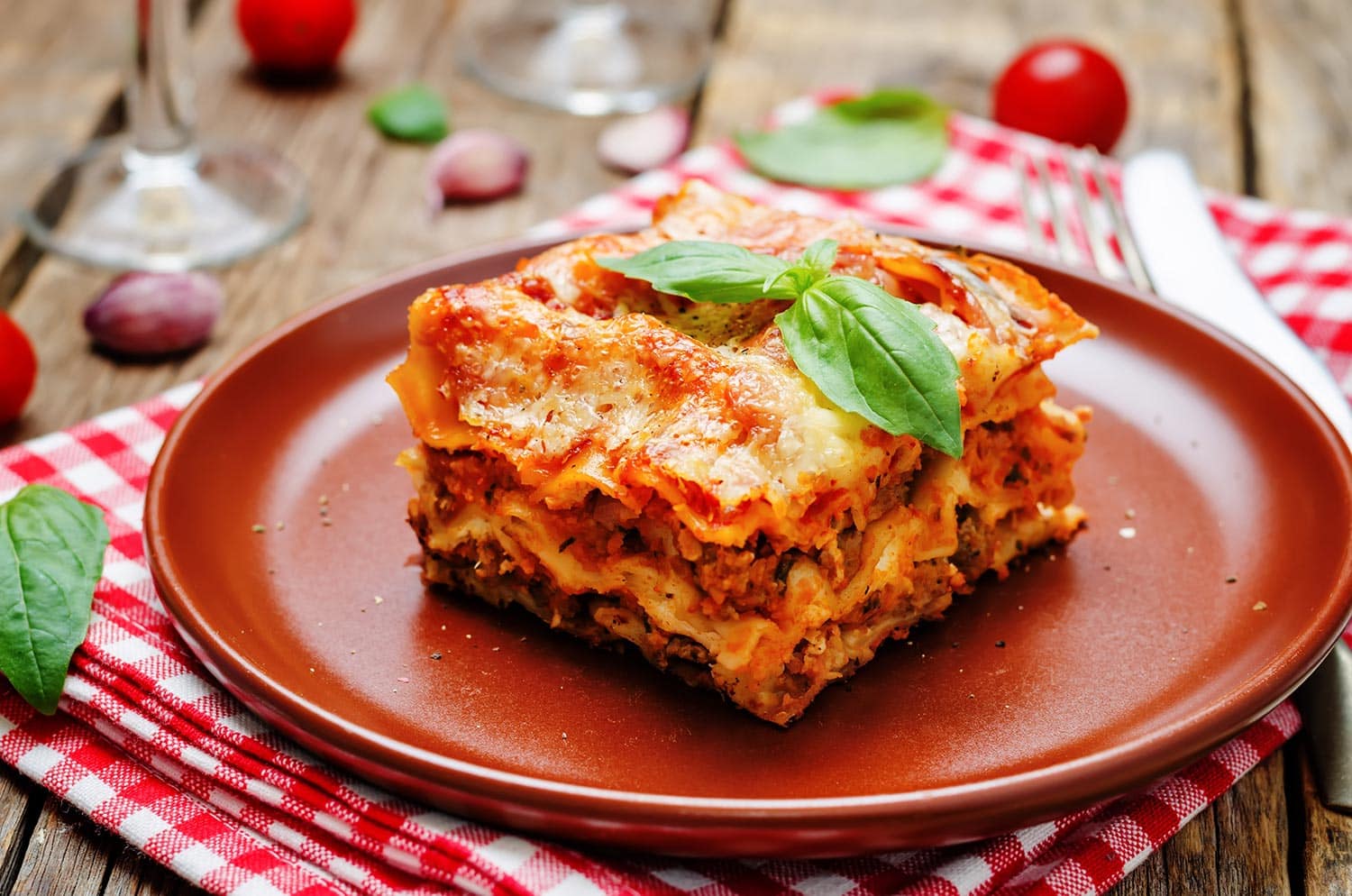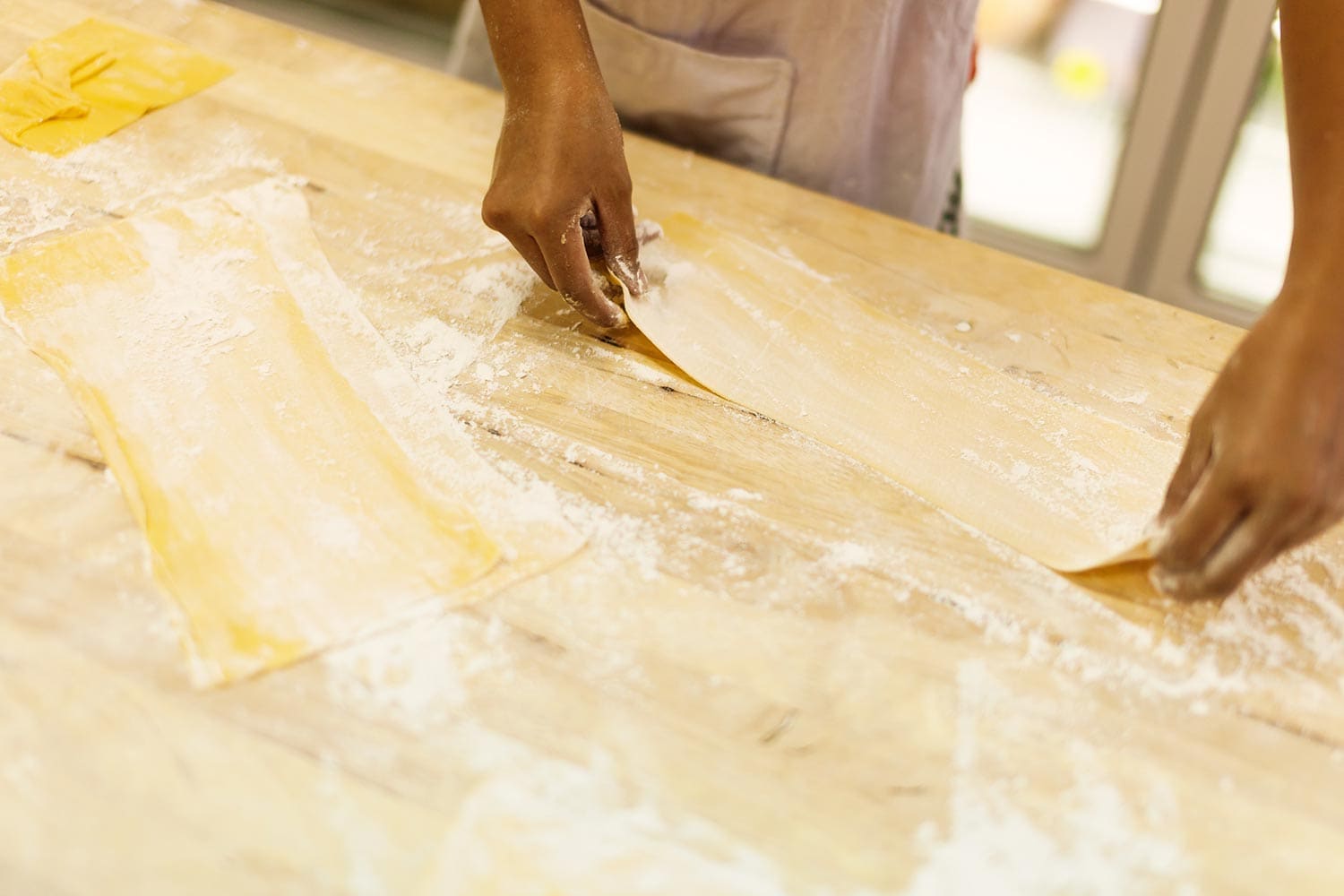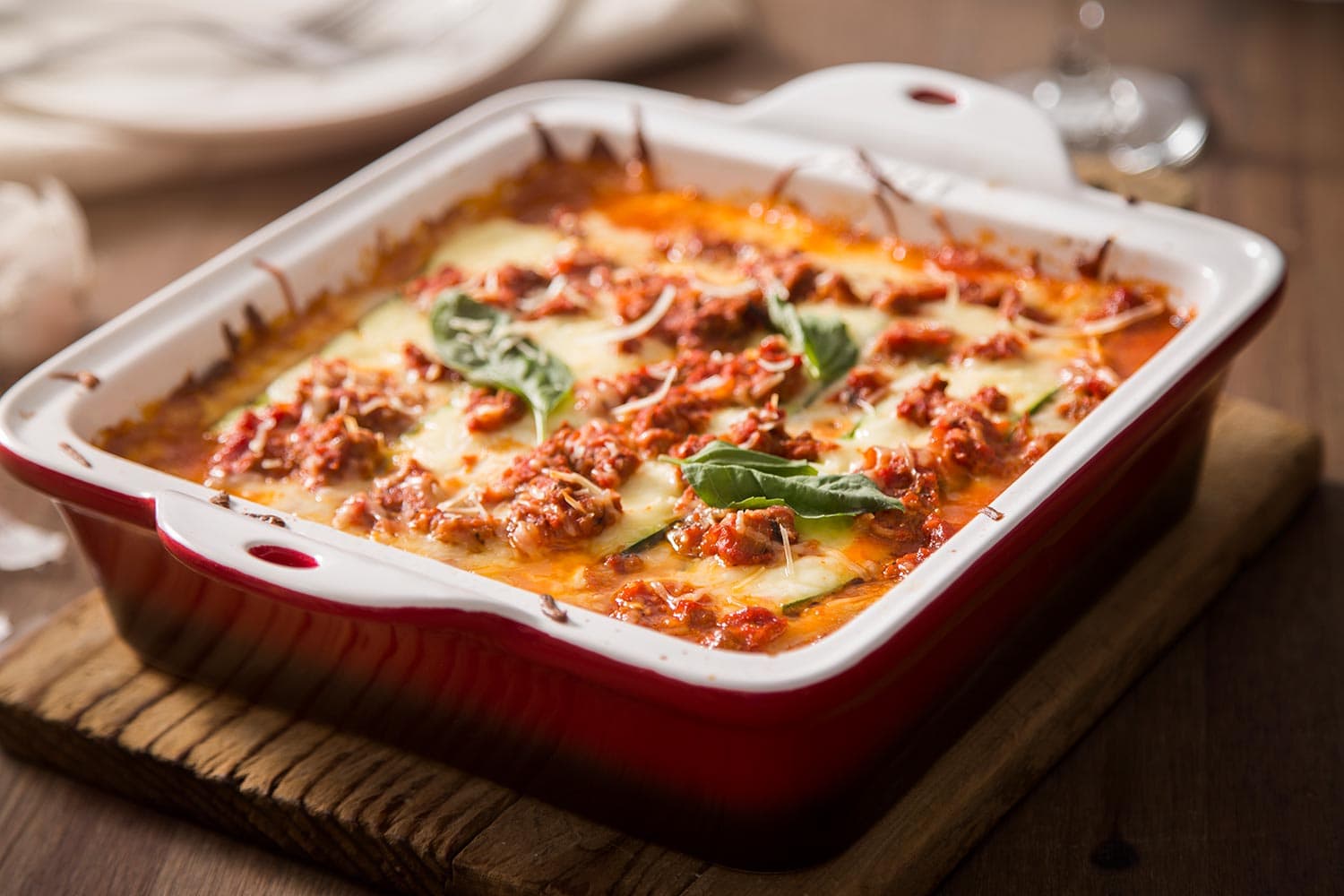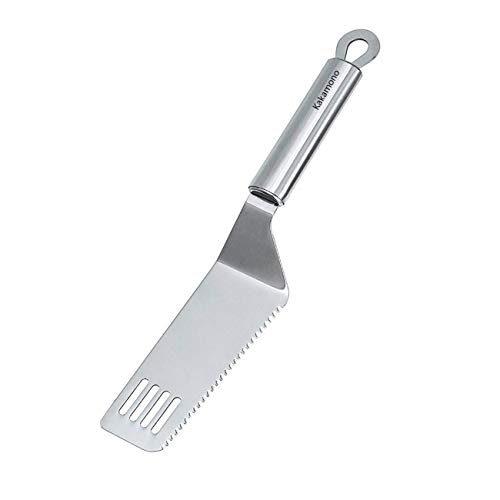Even if you don’t have an Italian mamma, there’s a good chance lasagna is one of your go-to comfort foods. This cheesy, meaty, and starchy meal has become a savory staple in kitchens around the world. Although everyone is familiar with this filling dish, you may have questions about the “proper” lasagna procedure. For instance, how many layers should a lasagna have? Don’t worry; we’ve dug deep into this deep-dish dinner to answer all your burning (or should we say “bubbling”?) lasagna questions.
Although there’s no “traditional” number, most lasagnas have between three to four layers. Feel free to add more layers to accommodate a large party. However, the majority of chefs agree that every lasagna should have a minimum of three layers.
While making your first lasagna may seem challenging, there are many tips and tricks you could use to prepare this meal like a pro. Please keep reading to find out all you need to know about making a delish lasagna dish.

The Layers Of A Lasagna
Let's learn a little more about the layers of a lasagna!
What's The Least Amount Of Lasagna Layers You Can Have?
If you’re going through all of the trouble to cook lasagna at home, you should plan to make at least three layers. Many celebrity chefs argue you can’t call your dish “lasagna” unless you include three layers of saucy goodness. You want each bite to be packed full of flavor, after all.

What's The Most Amount Of Layers You'd Want?
When it comes to layering lasagna, your only limitation is the size of your pan. However, most people say six layers is enough for a filling family-style feast. Any more than 6 layers and you may start competing for the "most layers in a lasagna" world record.
Does It Matter How You Layer A Lasagna?

Technically, there’s no "right" or "wrong" way to layer lasagna, but it’s strongly advised to follow this basic method:
- Put a thin layer of sauce on the bottom of your dish.
- Add a layer of cooked noodles.
- Spread ricotta, mozzarella, and parmesan cheese.
- Pour an even coating of your meat sauce.
- Repeat this process as many times as you want, finishing with a sprinkling of parmesan cheese.
The most important step is to put some sauce in your pan at the beginning. The reason for this is simple: it keeps your noodles from sticking to the bottom. This tip will make it a whole lot easier to scoop and serve your steamy lasagna.
Do you still notice burnt marks on your lasagna pan? Don’t panic! We have a whole post on how to get rid of burn marks on your casserole dish.
For even more guidance on layering your lasagna, check out this video tutorial on how to make a lasagna. The video walks you through all the steps from beginning to end:
Should You Make Lasagna Noodles At Home?
If you’re extra ambitious in the kitchen, you may be wondering whether making lasagna noodles at home is cheaper than buying noodles from the store. Well, the answer is kind of complicated.

According to our research, the price of your noodles largely depends on what brand you’re buying. On average, homemade pasta dough will cost about $0.15 per serving while store-bought pasta ranges between $0.17 – $1.91.
If you’d like to learn more about the pros and cons of making pasta at home, be sure to read this KitchenSeer post: Is Making Pasta Cheaper Than Buying? [Detailed Costs Revealed].
What Kind Of Pan Do You Cook Lasagna In?
Since lasagna is such a staple dish, there’s a whole category of pans conveniently called “lasagna pans.” You could also use casserole dishes or roasting pans to make this meal.

As you search online, you’ll find many different lasagna pan options with different sizes and materials. While choosing the perfect pan depends on your preferred price and cooking style, there are significant differences between pan materials and size. Below are a few considerations customers should keep in mind.
What Pan Material Cooks The Perfect Lasagna?
First off, you have to choose between a glass or a metal lasagna pan. The advantages of glass pans are that they distribute heat more evenly, have no risk of a “metallic” taste, and make it easier to see your lasagna while in the oven. On the downside, glass pans take longer to heat up and aren’t ideal for making crispy, dark-brown lasagna.
By contrast, metal pans are fantastic heat conductors, which means they will get your lasagna toasty in far less time. Plus, it’s easier to brown your lasagna in a metal pan, which is excellent news if you love a crispy crust. On the downside, some metal pans could interfere with your lasagna’s flavor (especially aluminum).
If you’re interested in getting a gorgeous golden sheen without worrying about a metallic taste, kitchen experts recommend going with a porcelain-coated cast iron pan.
Click here to see this product on Amazon.
For those more interested in using a glass lasagna dish, consider researching a Pyrex product like the one below.
Click here to see this product on Amazon.
What’s The Ideal Size For A Lasagna Pan?
After you’ve decided what material to use for your lasagna pan, it’s time to consider how big you want your pan to be. Obviously, everyone will need a different-sized pan depending on their group size. However, you should look for pans that are a minimum of 13 inches x 9 inches with a depth of at least 3 inches.
The extra depth is super important with lasagna pans. Not only do you want extra room to fit more layers, but you also want enough room for your lasagna to bubble without spilling over.
Here's a ceramic lasagna pan that has ideal dimensions.
Click this Amazon link for more details.
Can You Assemble A Lasagna and Then Cook It Later?
You can assemble your lasagna ahead of time and leave it in the fridge a few days before baking it. However, it’s essential to let your meat sauce cool before you assemble your lasagna. You should never place warm meat sauce directly in the fridge as this could encourage the growth of bad bacteria.
Also, notice we said you should put your lasagna in the fridge "a few days" before you bake it. For the highest-quality meal, pro chefs recommend assembling lasagna for a max of three days before popping it in the oven.
How Long Should You Let Lasagna Sit?
We know; you’re probably super hungry once that glorious lasagna comes out of your oven. However, you need to resist the temptation to dive right into this beautiful bubbling feast.
Always let your lasagna sit for at least 15 minutes before you start cutting. If you cut it immediately after you pull your lasagna out of the oven, it will probably break apart into a soupy mess. You need to let these layers sit for a few minutes to cut your lasagna into perfect squares.
For extra help serving your lasagna, be sure to look into stainless steel spatulas designed for this purpose.
Check out this product on Amazon.
What Types Of Lasagna Are There?
One of the greatest things about lasagna is how versatile it is. Although the traditional trio of meat sauce, cheese, and noodles is sublime, there are loads of lasagna variations to please even the pickiest eaters.
Consider spicing up your lasagna routine with a few of these fun alternative recipes:
- Give your lasagna a Mexican flair by replacing mozzarella with shredded cheese and red sauce with salsa.
- Instead of red sauce, make a white sauce with butter, flour, onion, garlic, cheese, chicken broth, and milk.
- Grab some fresh spinach and mushrooms to make a vegetarian-friendly lasagna.
- When autumn rolls around, try a sweet butternut squash lasagna.
- Take a trip to New England with a Maine lobster lasagna!
Before You Layer Your Lasagna, Learn The Basic Technique!
Now that you know the basics of making lasagna, it’s time to build one at home. After you’ve mastered your basic recipes, be sure to experiment with your favorite ingredients to create your preferred lasagna. And, although we probably don't have to remind you, enjoy your delicious lasagna!









![stacked layers of flat pasta, ground beef tomato sauce, cream and cheese. How Long Should You Cook Lasagna [Including The Pasta Noodles & Time In Oven]](https://kitchenseer.com/wp-content/uploads/2021/04/stacked-layers-of-flat-pasta-ground-beef-tomato-sauce-cream-and-cheese.-How-Long-Should-You-Cook-Lasagna-250x250.png)
